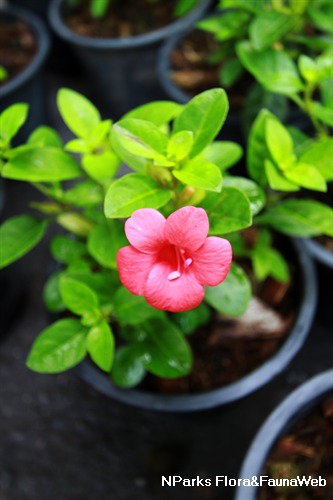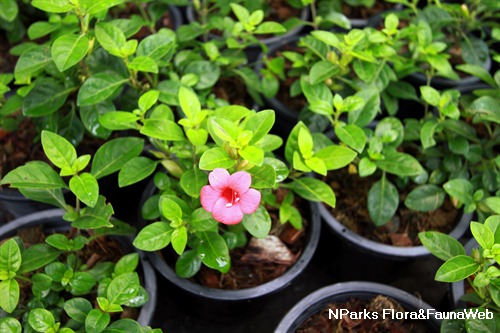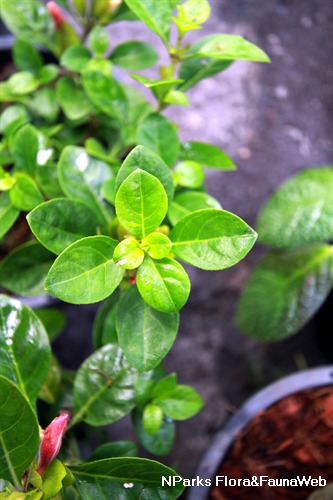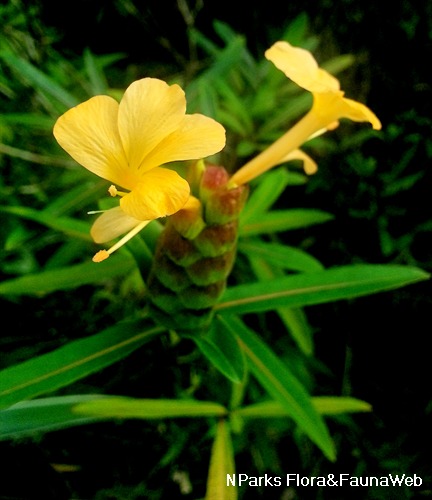
Name
Classifications and Characteristics
| Plant Division | Angiosperms (Flowering Seed Plants) |
|---|---|
| Plant Growth Form | Shrub |
Biogeography
| Native Habitat | Terrestrial |
|---|
Description and Ethnobotany
| Growth Form | A shrub usually growing to 0.7m tall and 1 m wide in cultivation and about 2 m tall when it climb over other nearby shrubs. |
|---|---|
| Foliage | Glossy dark green leaves are oval-shaped with entire leave margin. |
| Stems | Young stem is green and slightly hairy and becomes increasingly woodier with age. Stems produce roots when in contact with soil; hence the plant can spread extensively. |
| Flowers | Large tubular pink flowers (5 cm long and 2.5 cm wide) with 5-unequal lobes Flowers are borne in leaf forks and each flower has two green leafy sepals. |
| Fruit | Cup-shaped fruits split open to eject seeds away from the parent plant. Each fruit contains 4 seeds. |
| Similar | Barleria cristata are often confused with Barleria repens. B.cristata often has white flowers while B.repens are usually white. B.cristata has spine-tipped bracts at the base of its flowers but this is absent in B.repens. B. cristata has a more upright growth form while B.repens. |
| Taxonomy | The genus ‘Barleria’ was named by Swedish botanist Carl Linnaeus in 1753 to honour Jacques Barrelier, a French physician, botanist, plant collector, author and Dominican monk who is often cited as the Rev. James Barrelier. The specific epithet ‘repens’ refers to creeping in Latin. |
Landscaping Features
| Desirable Plant Features | Ornamental Flowers, Ornamental Foliage |
|---|
Fauna, Pollination and Dispersal
| Fauna Pollination Dispersal Associated Fauna | Bird-Attracting |
|---|
Plant Care and Propagation
| Light Preference | Full Sun, Semi-Shade |
|---|---|
| Water Preference | Moderate Water |
| Rootzone Tolerance | Well-Drained Soils |
| Propagation Method | Seed, Stem Cutting |
Foliar
| Foliar Margin | Entire |
|---|
Image Repository
Others
| Master ID | 32340 |
|---|---|
| Species ID | 6750 |
| Flora Disclaimer | The information in this website has been compiled from reliable sources, such as reference works on medicinal plants. It is not a substitute for medical advice or treatment and NParks does not purport to provide any medical advice. Readers should always consult his/her physician before using or consuming a plant for medicinal purposes. |






